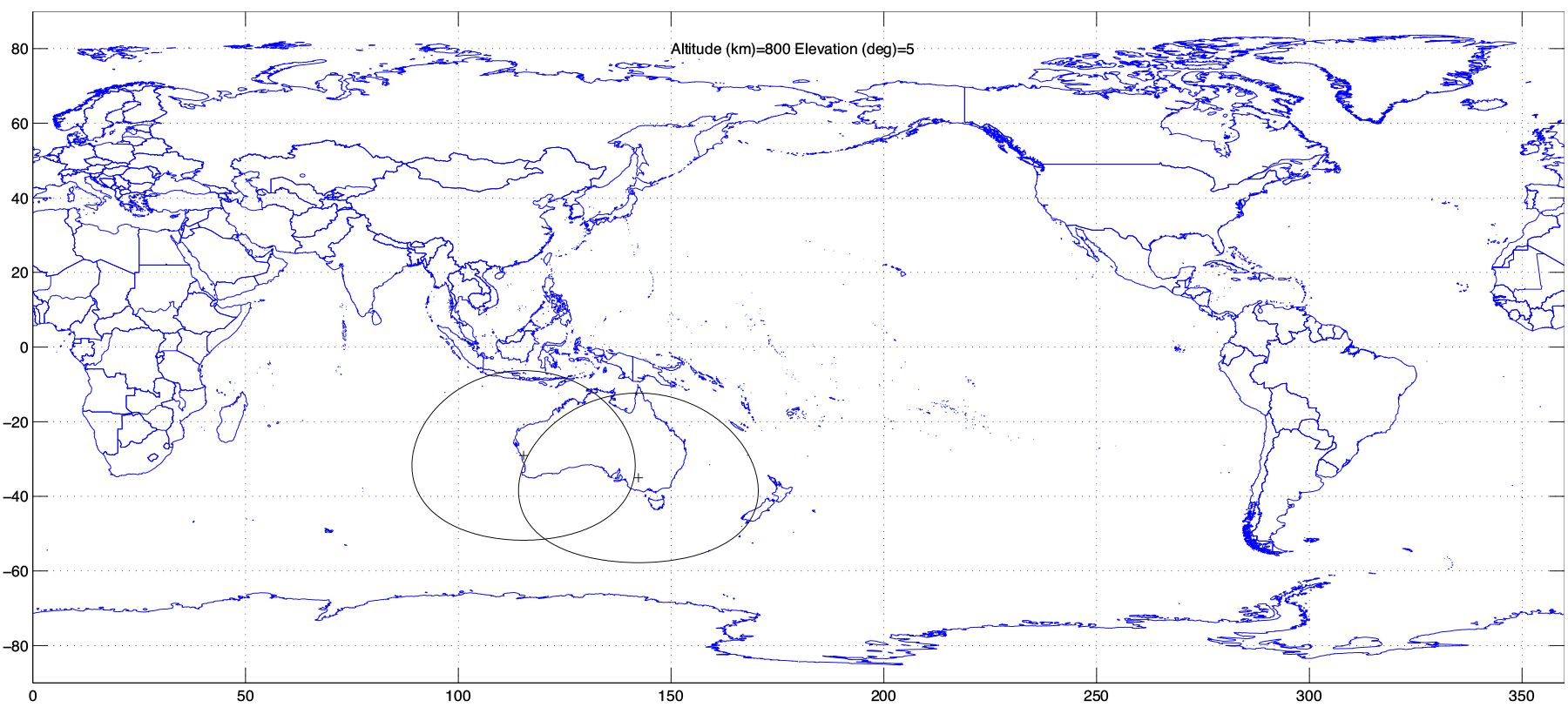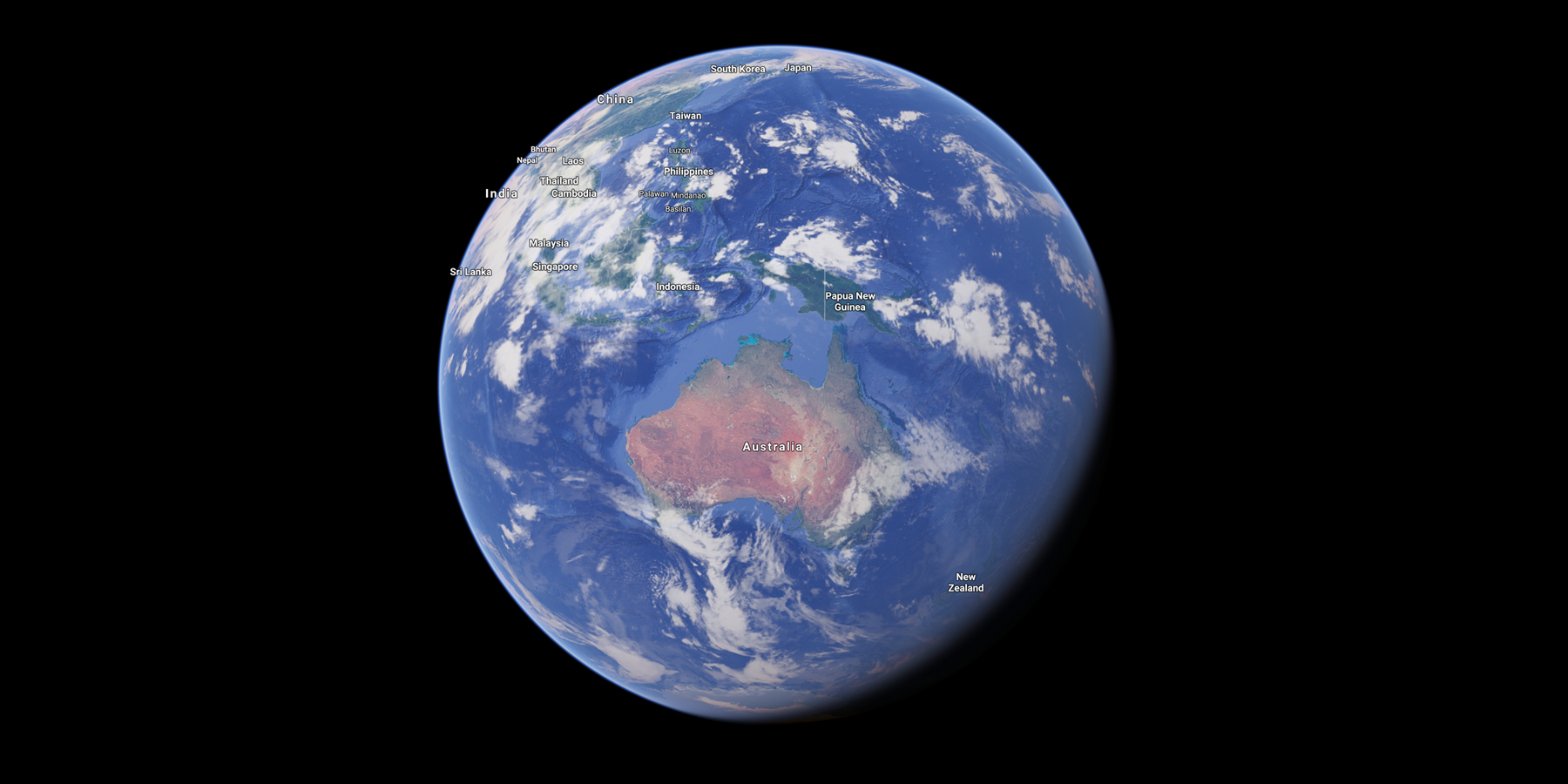Region
Southern Space
Whilst Australia has a long heritage of space activities ranging from support for the US manned space program, the Canberra Deep Space Communications Complex at Tidbinbilla, being one of the first countries to operate a Domestic Satellite System and just the third nation to launch a rocket into space, it is experiencing exponential growth thanks to the recent formation of the Australian Space Agency, a highly skilled workforce and a new breed of space enthusiasts and entrepreneurs.

altitude orbit with a ground station elevation angle of 5 degrees
Australia is well positioned to serve the burgeoning LEO/MEO constellation market as it offers coverage south of the equator, affords geographical site diversity (spans of 4,000 km east-west and 3,000 km north-south), attracts a competent workforce and possesses an extensive national fibre-optic network with multiple overseas connections.
Australia is also a strong proponent of the ITU and respects international rules and regulations, meaning the Regulatory framework is well defined and requires engagement with just a single Regulator.
What Are The Domestic Benefits?
Capricorn Space’s ground network offers many benefits both locally and nationally, including:
Employment
Development and construction at each site will require contracting and management support from local tradespeople and span town planners, architects, electricians, fencing contractors, site works specialists, landscapers, labourers and security personnel
Support
On-going operation of the capability will require maintenance personnel with specialist skills in radio-frequency and data networking
Centre of Excellence
Each ground station will help establish the region as a centre of excellence for innovation and science as data obtained from the capability will be used to progress multiple fields of science and engineering
STEM
The network will further Australia’s standing in Science, Technology, Engineering and Mathematics as it incorporates an interesting mix of radio frequency equipment (antennas, amplifiers, receivers, modems) and data networking equipment (firewalls, routers, switches). The capability will also allow students to gain an understanding of satellite orbits and transmission characteristics
School Interest
Students from local schools will be granted the opportunity to tour our facilities and receive briefings of its operation from our technical and operations personnel
Australian Space Agency
Our network reflects the determination of Australia to make a positive contribution to the world’s space community and to expand Australia’s domestic space capability
Down Under Facts

- Did you know the southern hemisphere land mass is half that of the northern hemisphere meaning less likelihood of ground stations?
- Australia has the largest longitudinal (east-west) span of any southern hemisphere country. The benefit being that our ground network is particularly suited to servicing a wide range of orbits, including polar and sun-synchronous
- Australia is the only country that is a continent in its own right, such is its geographical expanse
- Being the one country, we have just one Regulatory environment to consider
- …and yes we are happy to admit it, Australia is a long way from anywhere, so let us look after your southern hemisphere coverage
Bringing world-leading satellite data services
to the Southern Hemisphere
Capricorn Space’s location provides clients with unparalleled data access while bringing
unique opportunities to the region
Need help? Talk to us about
your requirements